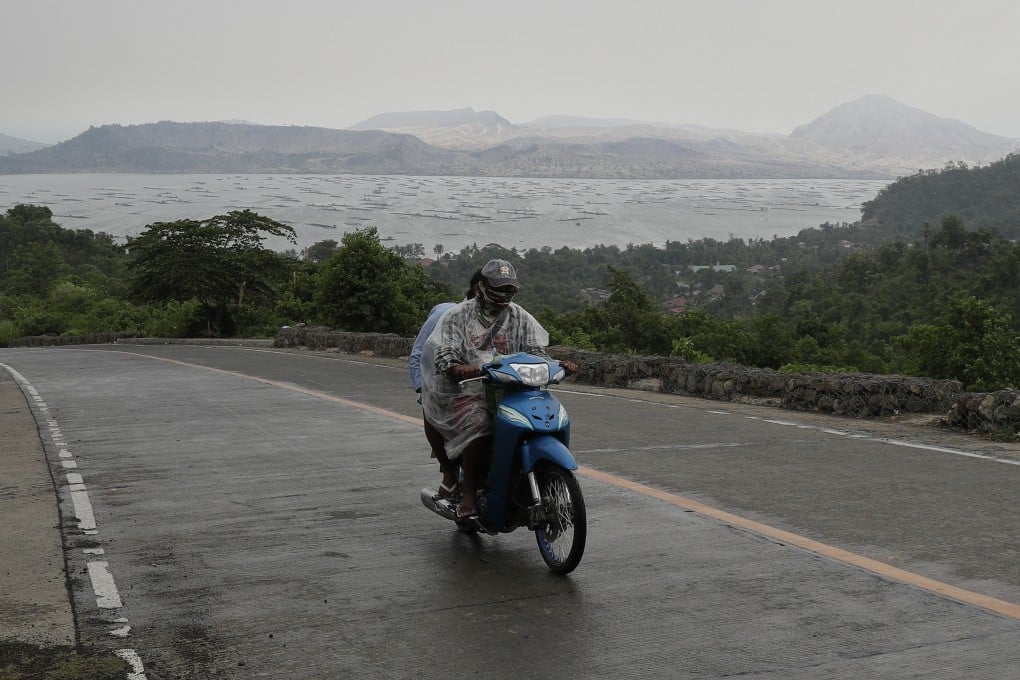Advertisement
Philippine scientists warn Taal Volcano could erupt ‘any time soon’
- The volcano sprang to life on Thursday and has been discharging sulphur dioxide for the past week, creating a haze over Manila
- Nearly 4,500 people have left their homes since authorities called for evacuations of high-risk areas
Reading Time:1 minute
Why you can trust SCMP

Philippine scientists warned on Sunday a volcano south of Manila could erupt again “any time soon” as toxic gas emissions hit a record high and thousands more people in vulnerable communities left their homes.
Taal Volcano, which sits in a picturesque lake, has been discharging sulphur dioxide for the past week, creating a haze over Manila and several surrounding provinces, and prompting health warnings.
Nearly 4,500 people have left their homes since authorities called for evacuations of high-risk areas on the lake’s shores, the provincial disaster agency said on Sunday.
Advertisement
Some settlements have been locked down, temporarily preventing residents from returning to their properties.
“An eruption similar to the 1 July 2021 event may occur any time soon,” the Philippine Institute of Volcanology and Seismology said in a statement.
Advertisement
Taal, which lies 50km (30 miles) south of Manila, burst to life last Thursday, sending steam and rock fragments hundreds of metres into the sky. Several smaller eruptions followed.
Advertisement
Select Voice
Choose your listening speed
Get through articles 2x faster
1.25x
250 WPM
Slow
Average
Fast
1.25x